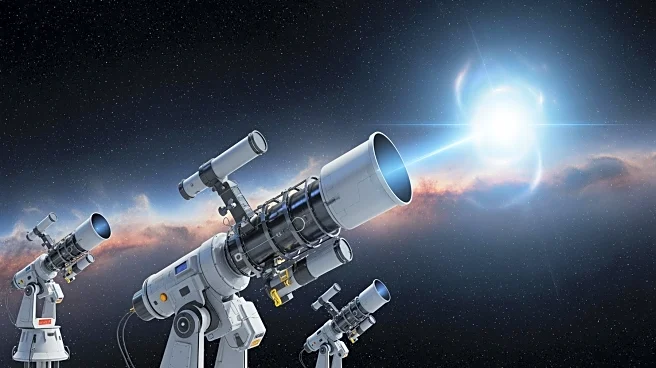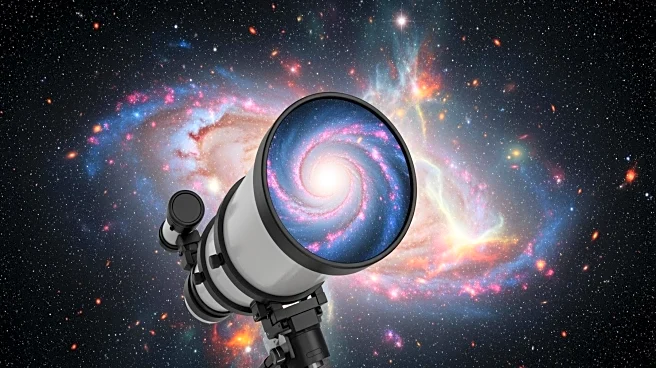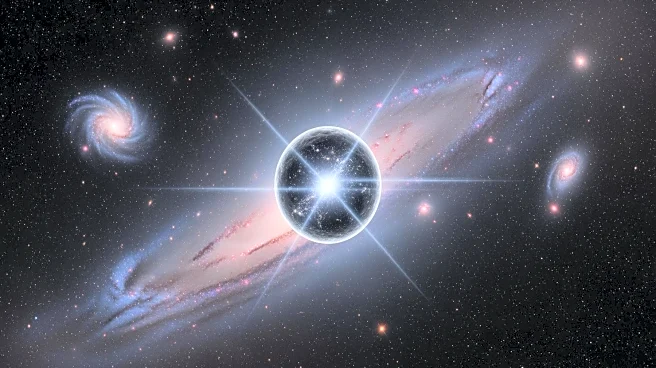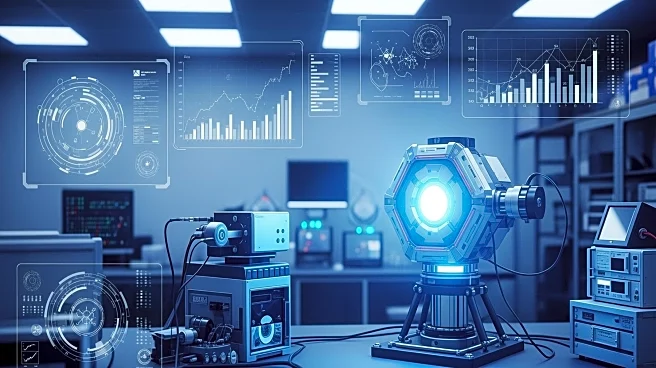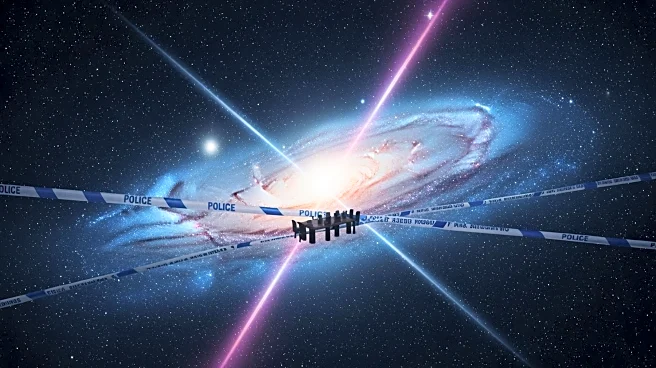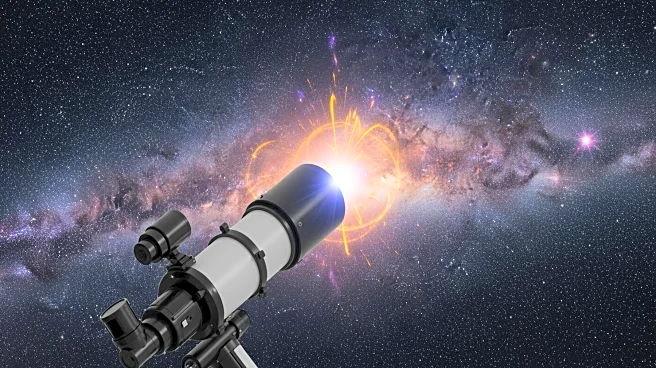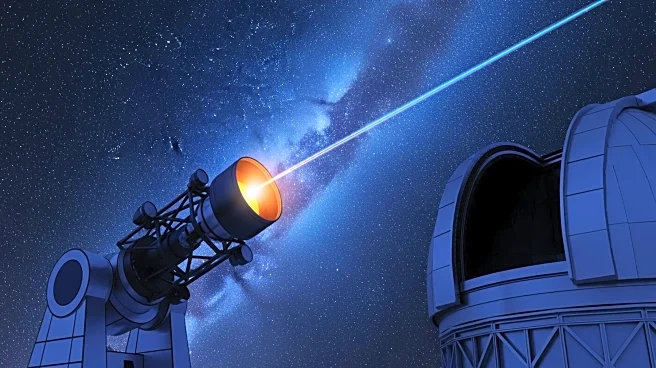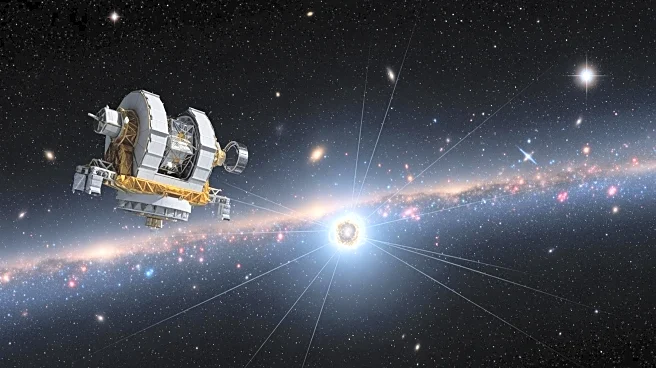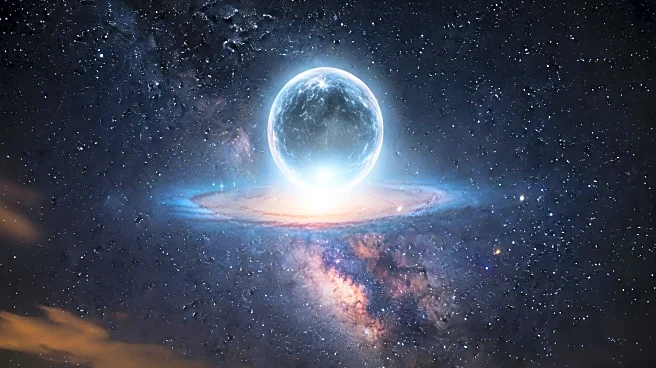What's Happening?
Recent studies using artificial intelligence have provided new insights into the spin and orientation of Sagittarius A* (Sgr A*), the supermassive black hole at the center of the Milky Way. The Event Horizon
Telescope (EHT) data, analyzed through a Bayesian neural network, suggests that Sgr A* has a high spin rate between 0.8 to 0.9 and is viewed at an angle of 20 to 40 degrees. This analysis helps in understanding the behavior of matter near the black hole and the dynamics of its accretion disk.
Why It's Important?
Understanding the spin and orientation of Sgr A* is crucial for astrophysics as it influences the black hole's energy extraction and particle acceleration processes. The findings could refine models of black hole behavior and contribute to the broader understanding of galactic evolution, including past events like galactic mergers. The use of AI in this research highlights the potential of machine learning in processing complex astronomical data, paving the way for more accurate and detailed cosmic observations.
What's Next?
Future observations with enhanced EHT capabilities and additional telescopes, such as the planned Africa Millimeter Telescope, are expected to provide more precise data. These advancements will help verify the current findings and potentially reveal new aspects of Sgr A*'s behavior. The continued integration of AI in astronomical research will likely lead to further breakthroughs in understanding black holes and other cosmic phenomena.



